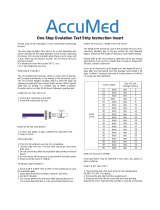Page is loading ...

Chapter 3
Starting Diagnosis
▣
Power Supply 3
Powering On 3
Powering Off 3
▣
Probes & Applications 4
Probe and Application Selection 5
Probe Setting Change 5
Editing Bodymarker 6
Calc Sequence 8
▣
Patient Information 9
Registering a New Patient 10
Searching for Patient Information 13
Modifying Patient Information 16


Chapter 3 Starting Diagnosis
3 -
3
Power Supply
Boot the system for use.
Make sure to connect the probe and peripheral devices that will be used before powering on the
system. If you attempt to connect them during system use, it may lead to patient injury or fatal
damage to the console.
Powering On
Press the On/Off button when the power is off. Booting begins, and the product logo appears on the
screen. When booting is completed, the 2D mode screen appears in End Exam status.
Before starting the diagnosis, you must register the patient information.
Powering Off
Press the On/Off button while using the system.
If you hold down the On/Off button for five seconds or longer, the product power is turned off
forcibly. This may cause hard disk damage.
▶
During system booting, do not press any key on the keyboard. It may cause product malfunction.
▶
The product should be turned on about five seconds after the power switch at the back of
the product is turned on.
CAUTION
CAUTION
CAUTION
NOTE

3-
4
Operation Manual
Probes & Applications
Before scanning, select a probe and an application.
Please refer to 'Chapter 9. Probes' for more information about the probes supported by this
system.
The Applications Screen
Press the App. key on the keyboard. The Applications screen will be displayed allowing you to
select an application or change the probe preset as needed.
The Applications screen provides the following options:
1
2 3
[Figure 3.1 Application]
①
The current probe attached to the system.
②
The list of available applications.
③
The list of available presets and usersets.
CAUTION

Chapter 3 Starting Diagnosis
3 -
5
Probe and Application Selection
Set a probe and an application in the Applications screen.
1. Select a probe and an application using the trackball and Set button.
2. After selecting them, click Ok. To cancel the selection, click Cancel.
※
Tip! - Selecting a probe with the Probe button
To switch to another probe without using Application screen, press Probe button on the control
panel. However, this button is available when you use the two probe connector (optional).
Probe Setting Change
Select a probe setting in the Applications screen.
While the probe settings are preset with the optimal values for each application, the user may change
the preset values using the following method.
1. After checking the currently selected probe/application, change the probe setting using the
trackball and Set button.
▶
A userset such as User1 and User2 can be selected for each setting. Click Save to save the
changed values. Change the names of the user-denable settings other than ‘Default’ values
using the Rename.
2. Click Ok in the Application Window. To cancel the selection, click Cancel.
For information on changing a userset for a probe, please refer to Chapter 7 ‘Utilities.’
Tips!
NOTE

3-
6
Operation Manual
Editing Bodymarker
Select some bodymarkers to use in the system or change the order of bodymarkers. Click Edit
Bodymarker in the Application screen to bring up the Bodymarker Manager window.
‘Group’ shows system supporting bodymarkers with the application. Use Prev or Next to display
Bodymarkers of other applications.
‘User dened Bodymarker preset’ shows selected bodymarkers.
[Figure 3.2 Bodymarker Manager]
Add Bodymarkers
Select a bodymarker on ‘Group’ using the trackball. Press Set button to add to the ‘User dened
Bodymarker preset’.
Delete Bodymarkers
Select a bodymarker on ‘User defined Bodymarker preset’ using the trackball. Press Set button to
delete.

Chapter 3 Starting Diagnosis
3 -
7
Back to default Bodymarker
Press the Default on ‘User dened Bodymarker preset’ to back to default Bodymarker.
Delete all Bodymarkers
Press the Clear on ‘User defined Bodymarker preset’ to delete all bodymarkers. It deletes
bodymarkers only in ‘User dened Bodymarker preset’.
Save Bodymarkers
Press the Save on ‘User dened Bodymarker preset’ to save current setting. When you press the
Bodymarker key on the keyboard during using the system, this setting will be displayed.
Refer to `Chapter 6. Image managements’ for more information about displaying Bodymarker.
NOTE

3-
8
Operation Manual
Calc Sequence
[Figure 3.3 Calc Package Sequence Change]
To change the order and content of the Calculation Package of each application, click the Calc
Sequence. If you want to return to the initial settings, click Default in the window.

Chapter 3 Starting Diagnosis
3 -
9
Patient Information
Press the Patient key on the control panel and then the Patient Information screen will be displayed.
This screen allows you to enter, search or change patient information. Patient information includes
basic information, such as patient ID, name, DOB and gender, and additional information for
applications.
ID and Name are required fields.
[Figure 3.4 the Patient Information]
NOTE

3-
10
Operation Manual
Registering a New Patient
1. After clicking the New in the Patient Information screen, enter the patient name, ID and other
information using the trackball, Set button and keyboard.
2. After entering patient information correctly, click Ok. Or click Cancel or X to cancel.
ID
■
Enter a patient ID.
To enter it manually, enter an ID in the ID eld.
▶
To enter it automatically, select Auto ID Creation and click New.
▶
If you enter an ID that exists already, the icon next to the ID eld is changed to
▶
.
Name
■
Enter patient’s full name. The name that you have entered will appear in the title area and
reports.
Accession
■
When viewing the worklist for a patient via the DICOM server, this information is automatically
lled.
Birth Date
■
Enter the patient’s birth date in the specied format.
Age
■
Enter the patient’s age in “yy-mm” format. When a birth date is specied in the Birth eld, this
information is automatically calculated and displayed.
Gender
■
Select the patient’s gender.
LMP
■
Enter the last menstrual period for a patient.
You can enter it manually in the specified format, or have it automatically calculated and
displayed with the GA entered.

Chapter 3 Starting Diagnosis
3 -
11
GA
■
It indicates the gestational age of a patient.
You can enter it manually in the specified format, or have it automatically calculated and
displayed with the LMP entered.
EDD
■
With the LMP or GA entered, EDD (Expected Date of Delivery) is calculated and displayed.
※
Tips! Calculating EDD
EDD can be calculated by entering LMP or GA.
▶
When LMP is entered: GA and EDD are automatically calculated and displayed on the screen.
▶
When GA is entered: LMP and EDD are automatically calculated and displayed on the screen.
Gestations
■
Enter the number of fetuses, up to maximum of 4.
Gravida
■
Enter the number of pregnancies.
Para
■
Enter the number of deliveries.
Aborta
■
Enter the number of abortions.
Exp. Ovul
■
Enter an ovulation date in the specied format.
Day of Cycle
■
Enter the number of days in the patient’s cycle in the “dd” format.
Tips!

3-
12
Operation Manual
Height
■
Enter the patient’s height in inches or centimeters. Click the unit button to toggle the unit. If the
unit is changed, the number entered is automatically converted and shown in the new unit.
Weight
■
Enter the patient’s weight in oz., lb. or kg. Click the unit button to toggle the unit.
BSA
■
If height and weight are entered, the body surface area (BSA) is automatically calculated and
shown.
HR
■
Enter the patient’s heart rate (HR).
Diag. Physician
■
Enter the name of the physician who has diagnosed the patient. When there is more than one
name available, the combo button can be used to select one of them.
Ref. Physician
■
Enter the referring physician’s name. When there is more than one name available, the combo
button can be used to select one of them.
Sonographer
■
Enter the name of the sonographer who has scanned the patient. When there is more than one
name available, the combo button can be used to select one of them.
Indication
■
Leave a note on the symptoms or disease.
Description
■
Leave a note on the diagnosis. If Description is entered, it can be searched for in SONOVIEW.

Chapter 3 Starting Diagnosis
3 -
13
Searching for Patient Information
You can search the patient information with following three methods.
Finding Patient Information using ID
Enter the Patient ID to change his or her information.
Finding Patient Information using the Search Function
1. Click Search in the Patient Information screen, and the Search window shown below appears.
[Figure 3.5 Search]
2. Type in patient ID or name, and the list of registered patients appears.
▶
If there is no ID or name that satises the search key, the Select and Ok are not activated.
▶
To display all registered ID, click Show All. To select all ID on the list, click Select All.
▶
To delete the ID and its all information, select the patient and click Delete.

3-
14
Operation Manual
3. After selecting ID, press Select or Ok to display information of the selected patient. To stop the
search or close the current search dialog box, click Cancel or X.
If a patient ID is deleted, all data and images stored in SONOVIEW
TM
are erased.
Finding Patient Information using Worklist
The system connects to the hospital’s DICOM Modality Worklist server and obtains information.
Searching a patient by Worklist allows you to enter the patient information automatically.
Use the DICOM tab in the Settings screen to select the Worklist server. Set the Worklist
Server in Setup > DICOM. For more information, see ‘DICOM Settings’ section in ‘Chapter 7.
Utilities.’
1. Click Worklist in the Patient Information screen and the Modality Worklist window will appear.
(If “Open MWL on Patient Key” is selected under the Setup > DICOM, pressing the Patient
button opens the Modality Worklist window rst.)
2. Select Worklist Server, enter one or more search conditions in “Search Criteria”, and then click
Search. A list of scheduled patients that match the search conditions will appear.
3. Select a patient and click OK. The patient information will appear.
4. Click X button on the window to quit searching patients and close the Modality Worklist win-
dow. If you wish to enter patient information directly without using Worklist data, click Manual
Entry.
ID, Name, Accession #, Birth, Age, or Gender cannot be changed when entering patient infor-
mation by using Worklist.
WARNING
NOTE
NOTE

Chapter 3 Starting Diagnosis
3 -
15
[Figure 3.6 Modality Worklist]

3-
16
Operation Manual
Modifying Patient Information
To modify information in the Patient Information screen:
1. Modify the information using the trackball, Set button and keyboard.
2. After modifying patient information correctly, click Ok. To cancel editing, click Cancel or X.
For more details on patient backup, see the ‘Information Management’ section in ‘Chapter 6. Image
Managements’.
NOTE
/

